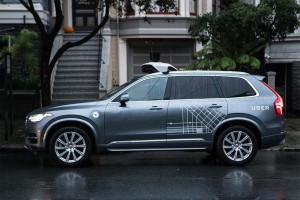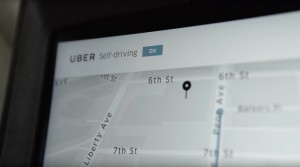Wondering what’s happened to the 16 autonomous Volvo XC90s Uber pulled off the streets of San Francisco this week? Rather than park the prototypes, the ride-sharing giant has decided to take them to Arizona.
Uber kicked off a storm when, on Dec. 14, it began testing the vehicles in the City by the Bay without the necessary permit from the California Department of Motor Vehicles. The agency quickly pulled the registrations on the autonomous vehicles, forcing them off the road. Uber also took heat when reports surfaced revealing the vehicles had violated numerous traffic laws, among other things running red lights.
While Uber admitted it had to fix a “problem” with its software, it made it clear it wasn’t abandoning its effort to develop autonomous technology. An initial statement from the company suggested it might move to another part of California, but Uber now says it will head to another state that does not require permits for testing.
“Our cars departed for Arizona this morning by truck,” Uber told the Reuters news service in a written statement. “We’ll be expanding our self-driving pilot there in the next few weeks.”
(Uber pulls autonomous cars out of San Francisco. For more, Click Here.)
A source at Volvo told TheDetroitBureau.com, meanwhile, that the partnership between the ride-sharing service and the automaker is “ongoing,” and that Volvo expects to provide more of its XC90s for autonomous testing.
The Swedish automaker itself is actively working on self-driving vehicles, with a major program in its home city of Gothenburg set to begin next year. However, in the alliance with Uber, Google is providing SUVs that are then heavily modified by the ride-sharing firm. The controlling autonomous software, for example, was developed by Uber, not Volvo.
Uber set up an autonomous development center in Pittsburgh early this year and began testing modified Ford Fusion sedans there in September. San Francisco became its second test base, using the Volvo XC90s.
Uber, which has had frequent confrontations with regulators in the U.S. and other markets, decided to skip the registration process, even though 20 other companies testing autonomous vehicles in California had gotten the necessary permits.
(Honda enters autonomous vehicle talks with Waymo. Click Here for the story.)
“This is where science and logic needs to trump blind compliance.” Anthony Levandowski, the head of Uber’s self-driving program, told the Associated Press, when asked why it hadn’t gotten a permit.
A week after launching the program, facing public criticism of technical problems, and legal pressure from the state, Uber announced it was stopping the San Francisco test.
It issued a statement saying, “We’re now looking at where we can redeploy these cars but remain 100 percent committed to California and will be redoubling our efforts to develop workable statewide rules.”
But, it now appears Uber has decided to go to Arizona to avoid having to get a permit. Why isn’t quite clear. The cost is only $150 per vehicle, a fraction of what the company is spending on each prototype. But the California rules also require that it would have to publicly reveal any incident involving one of the vehicles, including not only crashes but any event requiring the onboard “operator” to take back manual control.
(GM launching test of autonomous Chevy Bolt EVs. Click Here for the story.)
The shift in locale appears to have been triggered by an invitation from Arizona Governor Doug Ducey. In a statement he said, “Arizona welcomes Uber self-driving cars with open arms and wide open roads.” He also took a shot at his neighboring state, suggesting that, “While California puts the brakes on innovation and change with more bureaucracy and more regulation, Arizona is paving the way for new technology and new businesses.”


